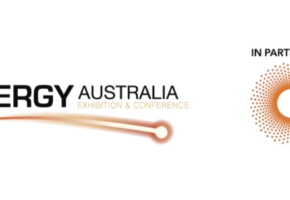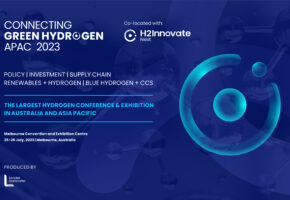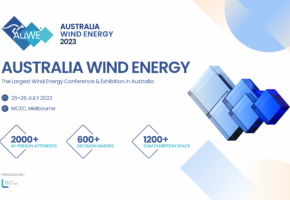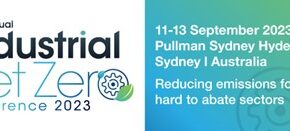Can Corporate PPAs support Green Hydrogen developments?
There is currently a huge amount of interest in developing Green Hydrogen in hubs around Australia. BRC-A provides know-how support to Corporates and Industry in Australia on how to do Corporate Power Purchase Agreements (PPAs) and support renewable energy. We are now seeing more enquiries from Hydrogen projects for Corporate PPAs.
Green Hydrogen is a big opportunity for wind and solar generation, as it can add flexible demand to our energy grids, using more energy and windy and sunny times, and less when renewable energy is less abundant. It is important for Green Hydrogen projects and companies to be able to demonstrate they are using renewable energy. Due to this emerging opportunity, we thought we would provide some initial thoughts on the topic.
What is a Corporate PPA?
The original Corporate PPA is a 10 to 15-year contract directly between an unfinanced wind or solar farm and a large corporate. The Corporate agrees a fixed price to pay for all (or a portion of) electricity generated and receives the wholesale market revenues along with the renewable energy certificates. This creates revenue certainty for the solar or wind farm, meaning it can get lower cost finance to fund construction.
In Australia, BRC-A terms these “Wholesale PPAs”, as they are transacted via the wholesale market.
There are other Corporate PPA model we discuss later in this piece.
Consideration 1 – Timing
Just like solar and wind projects, Hydrogen projects take time to develop. Typically, a wind or solar project has spent 1-3 years in development phase, doing engineering design, grid connection modelling, seeking planning approvals and other work prior to being ready for a PPA and investment.
At this point of PPA readiness, solar and wind projects will take the first offtaker they can find for a reasonably priced PPA. Getting a PPA can take up to a few years, and some projects actually never get a PPA or get financed, but sometimes getting a PPA can be as short of a month.
The hydrogen project development and investment industry is less mature, seeing development take more time, and lesser ability to lock in all costs and contracts prior to investment.
If a hydrogen project is seeking a PPA to ensure its green credentials, it will most likely be speaking to solar and wind projects that are PPA ready, and most of the solar or wind farm approvals and contracts in place to be ready for finance and construction. However, a hydrogen project may still be years away from finance and construction.
This creates a mismatch of timing. The solar or wind project almost fully developed and is ready for PPA, finance and construction. But the hydrogen project may not reach such a stage for a few years, and construction and operation may be even further away.
This mismatch of timing may make it challenging for a hydrogen project to lock in its PPA and green credentials during the development phase, and it may have to wait until later finance or construction stages when the hydrogen project is more fully developed.
This may mean Green Hydrogen projects can only commit to signing a PPA during the later finance stage, but not sign one during the development phase. This makes it a challenge for hydrogen projects under development to sign Corporate PPAs now, meaning they cannot secure green credentials for their projects at early stages.
This is acceptable as generally there are always wind and solar projects seeking PPAs, but if it is only a commitment to do something in the future, then it may be less reassuring to the project stakeholders.
Consideration 2 – Special Purpose Vehicles and Credit Worthiness
Solar and Wind farms are generally structured as Special Purpose Vehicles, that is a dedicated Pty Ltd company to develop and hold the asset. During development phase they are effectively “$2 companies” with no assets, apart from various rights, contracts, and approvals, such as an option for sale or lease of land, planning approval and/or grid connection agreement. While these are valuable, they provide little balance sheet or credit worthiness.
A key purpose of a PPA is to find an offtaker that is credit worthy, who provides the project with more revenue certainty and makes it “bankable”. When the project is more secure like this, it has the ability to get a loan to lower cost of capital and help fund the construction. For this reason, typically PPAs are with large energy companies or large credit worthy corporates or institutions like universities.
Generally, Hydrogen projects will also be SPVs, with no or limited balance sheet or credit worthiness. If a Hydrogen generator is operational, consuming large amounts of electricity, it is likely to be attractive as an offtaker for wind or solar farms. But if a Hydrogen generator is still in development phase, it won’t support a solar or wind farm getting finance, and therefore is unlikely to be attractive as an offtaker for an unfinanced wind or solar farms.
This lack of credit worthiness is another challenge for hydrogen projects to get PPAs in their early stages.
So how can hydrogen projects commit to renewables?
Firstly, be assured, once a hydrogen project is close to finance and commencement of construction and timing and scale of commencement of energy demand is certain, there is likely to be many Corporate PPAs available from wind and solar farms. But until that point, you may need to investigate other options.
Signing a renewable retail agreement with a large energy company (retailer) may have similar challenges as the retailer will want to know how much energy the hydrogen generator will use, starting from when and what is the usage profile for each 30 minutes. Retailers must enter into futures contracts to manage their price risk, and they cannot do this without certainty of a customer demand.
A possible option that comes to mind, is setting aside budget for direct investment into a renewable energy project. Many organisations have chosen equity investment rather than a PPA. There are existing examples of this, where companies or organisations invested in their own solar farms, like Sun Metals 120 MW solar farm, Sunshine Coast Council’s 17 MW solar farm and Newcastle City Council’s 5 MW solar farm.
There are certainly other options, and most likely other models that will emerge. Australians love to innovate, and there are many clever people in the energy profession that will find solutions to the above problems.
Definitely setup a plan
If a Hydrogen project needs to meet stakeholder expectations and demonstrate it will be Green Hydrogen by using renewable energy, then it is important to get started and develop a detailed plan. This can include exactly how the project will support renewables and emissions reduction, how it will support finance of new solar and wind through PPAs, purchase of certificates, partnering with a green retailer, investing in new wind and solar or other option. This plan could estimate emissions, and the methods of reducing these. This could include adding demand flexibility to hydrogen production, to use electricity more during higher renewables and lower emissions times.
During the development phase of a hydrogen project, a serious plan that demonstrates research and commitment is possibly the most credible way to show stakeholders a hydrogen project will be green.
Latest news & blogs
NEWS | 7 November, 2023





